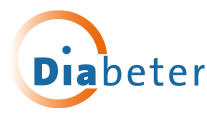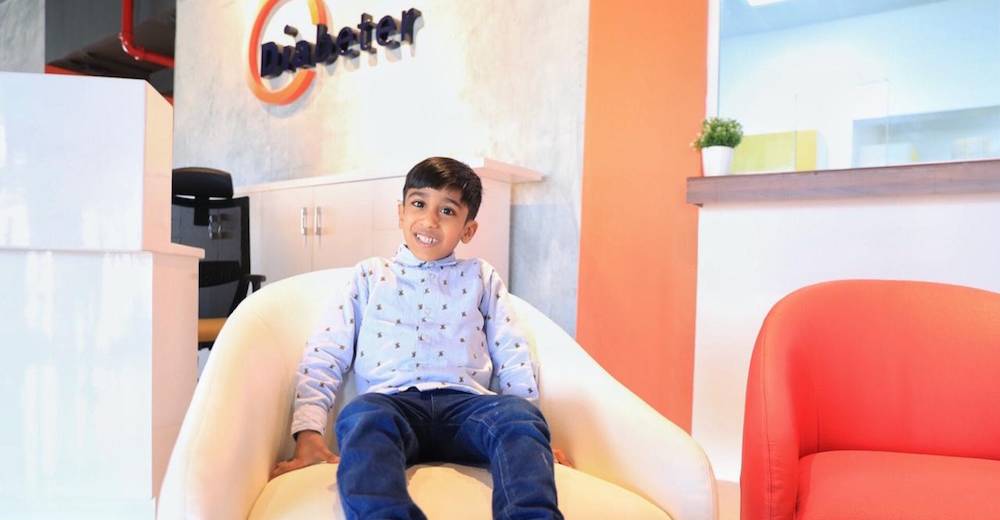Who we are – Diabeter
We offer fast and convenient access to diabetic care services
The mission of Diabeter: a future without diabetes complications
Diabeter is the specialized treatment center for type 1 diabetes in children and young adults. Not only does it want to provide good diabetes care, it also wants to make diabetes care better. We’re working on a future without diabetes complications for all of our patients. The way we work leads to remarkable results even now: 58% of our insulin pump users in the Netherlands reaches an HbA1c*) lower than 7.5%. A very good result, also in international perspective. And important too, because better diabetes regulation means much less hospitalization (only 3% of our patients per year in the Netherlands). This means that the young people who receive treatment from us grow up healthier in the long run. Diabetes complications are prevented as much as possible.
*( The HbA1c is a yardstick for average value of the blood glucose level over the past two to three months. Set value for children is <7.5% (< 58 mmol/l.).
Diabeter was founded in 2006 by pediatricians Henk-Jan Aanstoot and Henk Veeze. They were of the opinion that diabetes care for children and young adults could be better. These children and young adults deserve a future without diabetes complications. And this calls for an independent specialized center where diabetes is the only focus of attention. The need for such a center proved to be much larger than expected especially in Saudi Arabia where the estimated prevalence of Type 1 diabetes is in children and young adults is between 35,000 and 50,000.
Diabeter, different through focus and innovation
The care for children and young adults with type 1 diabetes deserves a specialized treatment centre with a complete focus on type 1 diabetes. It is this focus that enables us to provide optimal care for young people who grow up with this chronic disease. Diabeter does not only provide care, it also plays an active role in making this care better. We do this by participating in scientific research that is aimed at giving the target group a life without diabetes complications. In the end this must lead to a definitive cure for type I diabetes.
The newest insulin pump and sensor technology
To make diabetes care better, we seek to use the newest technologies available for people with type I diabetes. We also participate in national and international scientific research, aimed at better treatments and ultimately at curing diabetes.
E-health:
Diabeter provides almost real time personalized care by remote monitoring of blood glucose levels. The patient can easily upload these levels through his glucose meter and/or insulin pump. Within a few minutes, he/she will receive a colour sheet (dashboard) on their personal page on the Diabeter portal, offering insight into the glucose values of the past weeks. Red means the levels are too high, blue stands for too low blood sugars and green is good. This way, the patient has a direct knowledge of how he/she is doing, which offers a concrete starting-point for consultation with the Diabeter medical team.

Education and motivation
Diabetes care demands many daily actions. ‘It’s an extra job besides your usual work’, parents and patients sometimes say. For this, Diabeter can offer education and direction, also for the patients’ surroundings. We organize home and school visits and meetings for parents, children and special meetings for our patients’ teachers. For Diabeter personal and intensive contact are essential. In the past, outpatient consultations were priority, but now the contact in between consultations via email, uploads and telephone have become an important part of our diabetes care. This gives us the opportunity to continuously adjust the diabetes settings if need be. And we do much more now than just adjust for the patient: we teach parents and patients to do this themselves. This means they can live a much more flexible and dynamic life than ever before.
Medical results
The quality of care for children and young adults with type 1 diabetes can be measured by two things: the HbA1c level and the number of diabetes related acute hospitalizations.
For children and young adults an HbA1c lower than 7.5% is the set value and for adults less than 7%. In 2012, in the Netherlands 58.4% of our patients had an insulin pump. Of these patients, 36.8% reached an HbA1c level between 7.5 and 9.5%. 19.4% even reached an HbA1c level of less than 7%. Even better were the results in patients who used a pump as well as a sensor. 58.5% of these patients in The Netherlands had an average HbA1c level of less than 7.5%. 31.7% of this patient group even reaches an average level of less than 7%.
In an international perspective, these are good results. By comparison, Diabeter patients also less often have to be submitted to acute hospital care. At Diabeter, this is only 3%.




